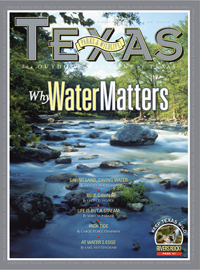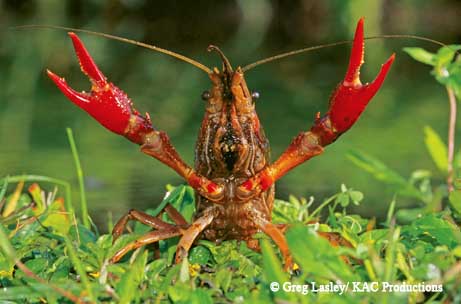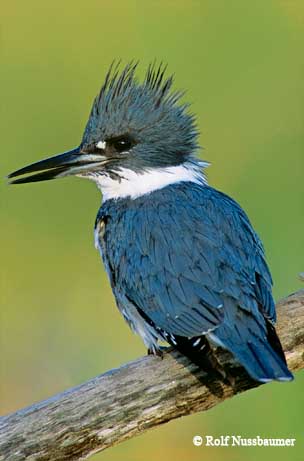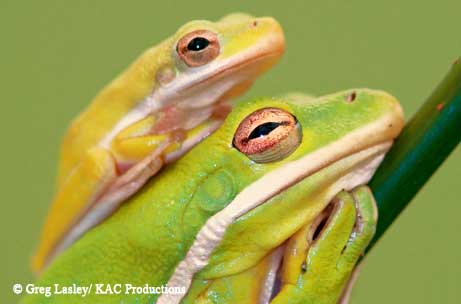
Life Is but a Stream
Are there crawfish in the creek behind your neighborhood mall?
By Mary O. Parker
My toes plan their escape the moment I spot the stream behind the strip mall. The mere glimpse of flowing water amid big-box retailers sends me longing for those rolled-up-cuffs, silty-creek-bottom days — the simple days of childhood.
In this era of asphalt, the city stream provides both the curious child and an adult’s childlike curiosity a playground for discovery. Here, at the seams of a suburban fabric, exists a riparian universe that defies city-block neatness. Here, we can steal glimpses of nature while our spirit defies the chaos of the concrete jungle. For the animals of these freshwater communities, urban watersheds offer more than simple sanctuary — they are their whole world. Perhaps you’re already acquainted with these residents, but if not, it’s time to meet the neighbors. Off with your shoes and up with your cuffs!

A Pinch of Courage
Whether you call them crawdads, crayfish or crawfish, you’re talking about one of the most abundant freshwater invertebrates in Texas. You’re also talking about an animal that, according to Ken Johnson, co-author of Texas Crawdads, “offers young creek adventurers the perfect test of courage.”
He says it used to be that “catching crawdads was an almost universal childhood experience, especially for city kids with nature access often limited to riparian corridors along small urban creeks.”
Today’s city kids (and adults) can still experience crawdad country. Look along the water’s margin for their burrows, holes about an inch in diameter with small pellets piled along the sides. “Burrows are constructed for protection against predators and drought. During dry times they typically plug burrow holes with mud and wait for flooding,” says Johnson.
These crustaceans do more than make great étouffée; they’re also an important food source for many stream-dwellers and help keep aquatic ecosystems healthy. “Crawfish food is largely partially decomposed materials and soft tissue plants,” Johnson explains. “Thus, their feeding helps to limit growths of soft tissue plants and supports the general processes of decomposition in small waterways.”

It’s Great to be King
As you walk through the creek bottom, there’s a good chance you’ll see a belted kingfisher (Ceryle alcyon) perched over the water on its “throne.” These birds lay claim to a branch and reign from there, watching for the next unsuspecting meal.
Once dinner is spotted, the belted kingfisher hovers above it like a helicopter and, in a flash, plunges head-first into the water to collect its prey with a long, sharp bill. These birds eat mostly fish and, like owls, regurgitate what they don’t digest (such as scales and bones) in the form of pellets.
With its blue “crown,” the kingfisher is aptly named; both males and females can be recognized by the mohawk-like crest at the top of the head. Both genders are short-legged, have a white ring around the neck and are mostly blue in color. But, in an exception to nature’s norm, the female of the species gets to show off more than the male — she’s also adorned with reddish-brown coloring on the front.
Together, a mating pair vigorously defend their territory, a half-mile or so portion of the creek. They also work as a team when it comes time to tunnel into the stream bank and make a nest. Nest tunnels, which run an average of 6 feet, slope upward from the entrance so flooding doesn’t reach babies safe in an air pocket. When these babies are born they look far from regal — they come into this world naked and helpless.
Home is Where the Caddisfly Is
Staying busy by creating a silk-spun home (called a “case”) and perpetually weaving pebbles and pieces of leaves into it for camouflage and creating a net to catch its meals, the caddisfly gets no lazy days of youth.
When not working, this underwater architect chomps its way into becoming a bigger bug. And the more this critter eats, the more work it creates for itself since the case must be constantly remodeled to keep up with its owner’s expansion. Caddisflies spend most of their lives in these hard-working larval stages, which, depending upon the species, can take up to two full years.
This insect pupates, like a butterfly, and wraps itself up tightly in its case. Upon emerging, it leaves both its aquatic home and food behind. “Adults have very weak mouthparts and are only capable of drinking liquids,” explains entomologist Nathan Riggs. One reason for their short life spans: They get only a few hours to a few days to find a partner and ensure that the caddisfly circle of life goes on. Unfortunately, they often waste precious time around porch lights since, like moths, these nocturnal insects are attracted to light. In fact, many folks mistake them for moths because they look very much alike. But, while moths have scales on their wings, caddisflies instead have tiny hairs.
Dragons, Damsels and Odonates, Oh My!
If he had to choose, renowned odonate expert John Abbott says he’d rather be a nymph than an adult. “Nymphs are longer lived and every bit as cool as the adult, plus they have a neat way of capturing prey with a hinged, extendible mouthpart called the labium, which reaches out and grabs prey with palps armed with teeth.”
Besides, says Abbott, “Nymphs have an aquatic immature stage that is usually far longer than the adult stage.” Far longer is no exaggeration — the nymph stage can last up to four years! What determines how long odonates remain immature? “The species, the latitude and how much they have to eat,” Abbott says.
But what’s an odonate, anyway? Simple: dragonflies and damselflies. And, just to clear up a common misnomer: Dragonflies are not the males of the order, and, likewise, damselflies aren’t the females. Rather, dragonflies and damselflies are different species of the order Odonata, and include not only both genders, but many subspecies, too.
When it comes to creekside cinema, these insects put on one of the best shows a nature-seeking city-dweller could find. Says Abbott: “Many species exhibit territorial behavior, and others, courtship. You may see two males combating in the air over a territory. These skirmishes can be quite impressive and loud. Males of many species will grab a female out of the air to mate with, and they will fly together to a nearby perch. Sometimes the female and even the male will submerge themselves below the water to lay eggs.” This is one reason Abbott recommends grabbing a snorkel mask and peering into your local creek.

Hey! Those Legs Weren’t There Yesterday!
First, you’ve got these little formless beings swimming around, and then, before you know it, it looks as if they’re sprouting legs. The next time you visit you see that, by golly, those are legs! At this point, these critters are no longer tadpoles but metamorphs.
Travis LaDuc, assistant curator of herpetology at the Texas Natural Science Center, says, “Metamorphosis is the neatest stage to me. An animal that completely changes its morphology as a vegetarian tadpole to an insectivorous metamorph is unbelievable.” He says that not only do frogs and toads rearrange and change their digestive tracts, but they also undergo changes in the shape and size of their heads, grow limbs and lose tails!
The typical frog’s life cycle has four stages, the first of which is the egg. The eggs hatch into water-dwellers with gills, better known as tadpoles. Next comes the fascinating metamorph stage. After the metamorph loses its tail and gills, it has become an adult.
While Texas currently has 43 species of anurans (frogs and toads), LaDuc says you’re most likely to encounter a cricket frog (Acris crepitan), a native common to most stream societies statewide. But, no matter which form of ribbit you find in your neighborhood creek, LaDuc explains the important role anurans play in the stream of things. “They’re an integral cog in the riparian ecosystem, serving as both predator and prey within the food web. The absence of anurans from a system means something is or will be out of balance. Water quality unsuitable for anurans to live in may in turn be unsuitable for other animals to live in [or drink — like us]!”
Sliding into Home
If you’re walking along the creek and hear a splunk! don’t be alarmed. Chances are a red-eared slider (Trachemys scripta elegans) has gone into hiding. These turtles hold the “slider” moniker because of how quickly they slide from their sunny basking places into the water when disturbed. But, if you’re quiet, they’ll be back to basking soon — these guys really love to soak up the sun. That’s one reason they go into brumation (the reptile version of hibernation) when temperatures fall below 50 degrees.
The “red-eared” part of their name comes from the reddish strip of color that extends behind the eye. You’ll also notice some red on the carapace (the top part of the shell) in places where the plates (scutes) have grown together. (By the way — the bottom part of the turtle’s shell is called a plastron.) You can tell that a red-eared slider is getting up in years because the older it gets, the darker its carapace gets.
Males are slightly smaller than females, but when it comes to front claws the male, hands-down, has the longer nails. That’s because he’ll need them to “tickle” the female during courtship. The male turtle will try to position himself facing the female and wave his long front claws in front of her. If he tickles her fancy, the two will mate. The female nests in early summer, burying four to 25 eggs in a sunny location (of course!). In about 2 months, 1inch baby red-eared sliders emerge, using an egg tooth (which falls out about an hour after birth) to break through the leathery shell. But, it’ll be another two to four years before they’re big enough to engage in tickling.
The riparian communities where these neighbors and others like them live give us a special place to wander in the midst of chaotic modern hustle. Unfortunately, the very world from which we need to escape threatens these “neighborhoods.”
For urban watersheds there is no escape from our chaos, which is carried into streams by rainwater. Roofs, concrete, asphalt and gutters channel rainwater into the watershed at a rate much faster than nature ever intended. With each storm, what was once simply the stream’s essence now unnaturally races through, washing away whatever is in its path, including many of our neighbors’ efforts to create the next generation. According to Clint Robertson, an aquatic biologist with TPWD, as rainwater leaves our world and heads for the stream, the result is “the lack of riparian habitat and stream bank vegetation, and erosion due to increased surface runoff.”
Two basic types of pollution also threaten our city creeks: source (point) and nonpoint source pollution. Source pollution is when something is put directly into the water (such as old tires or trash), whereas nonpoint source pollution, which accounts for nearly two-thirds of pollution, makes its way into the water indirectly.
Cindy Loeffler, TPWD water resources branch chief, explains: “Unique threats to urban streams and creeks include nonpoint source runoff from overuse of fertilizers and herbicides on landscapes and from impervious surfaces like parking lots and roads.” Where rainfall cannot soak into the soil, it runs off, taking chemicals that have settled on the surface with it (i.e. oil from parked cars).
As long as there is rain, streams will flow. It’s how they will flow and with what they will flow that will determine the quality of these urban sanctuaries. We’re a permanent part of stream society, and those lives that inspire in us a sense of wonder depend on us to make what are often simple changes and better choices. With our universes irrevocably intertwined, shouldn’t we wiggle our toes into the stream with consciousness?
10 Small Changes for Big Effects:
|
1) Don’t dump aquariums — instead find your turtle, aquatic snail or fish a home and let aquatic plants completely dry before discarding in the trash can. 2) If rain is expected, wait until afterwards to use lawn chemicals. 3) Use pesticides as a last resort. 4) Establish plants in bare spots to reduce erosion. 5) Reduce fertilizer amounts by half: half as much, half as often. 6) Use phosphate-free laundry detergent. 7) Direct water runoff to soil instead of pavement when possible. 8) Recycle oil and catch oil from leaky cars. 9) Don’t dump antifreeze or chemicals into storm drains (these waters lead directly to streams and rivers) — check with your city for disposal locations. 10) Clean up after your pets to keep bacteria from getting into streams. |

